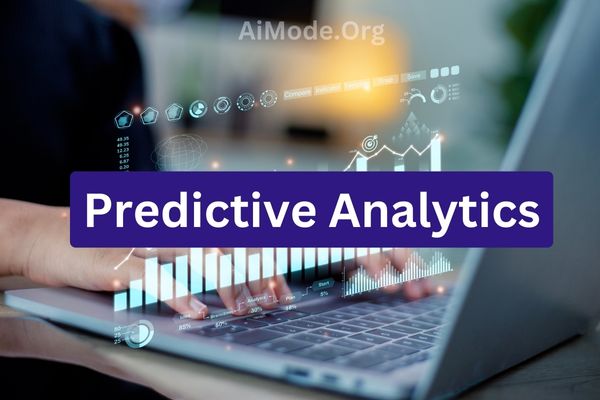Predictive analytics has become a cornerstone in various industries, leveraging historical data to make informed predictions about future events. Central to this revolution is machine learning (ML), a subset of artificial intelligence (AI) that enables computers to learn from data and improve over time without explicit programming. This article explores the role of machine learning in predictive analytics, examining key techniques and tools that are transforming data-driven decision-making.
Also See: Latest Artificial Intelligence Topics For Phd
Predictive Analytics: Tools And Techniques with Case Study
Understanding Predictive Analytics
Predictive analytics involves statistical techniques and algorithms to forecast outcomes based on historical data. It is used in various applications such as customer behavior prediction, risk management, and operational optimization. The process typically includes data collection, data processing, statistical analysis, and model building. Machine learning enhances this process by automating the creation and refinement of predictive models, making them more accurate and efficient.
Also See: 7 Different Types of Generative Ai
Key Machine Learning Techniques in Predictive Analytics
- Regression Analysis
- Linear Regression: This technique models the relationship between a dependent variable and one or more independent variables. It’s commonly used for forecasting and estimating relationships.
- Logistic Regression: Used when the dependent variable is binary, logistic regression helps in classification problems like spam detection and customer churn prediction.
- Decision Trees and Random Forests
- Decision Trees: These are flowchart-like structures where an internal node represents a feature (or attribute), the branch represents a decision rule, and each leaf node represents the outcome. They are simple and interpretable.
- Random Forests: An ensemble method that constructs multiple decision trees and merges them to get a more accurate and stable prediction. It helps in reducing overfitting seen in decision trees.
- Support Vector Machines (SVM)
- SVMs are used for classification and regression challenges. They work by finding the hyperplane that best divides a dataset into classes. SVMs are effective in high-dimensional spaces and are used in text classification and image recognition.
- Neural Networks
- These are a set of algorithms modeled after the human brain, designed to recognize patterns. They are particularly powerful in handling unstructured data like images, audio, and text. Deep learning, a subset of neural networks, has enabled significant advancements in predictive analytics by providing high accuracy in complex tasks.
- Clustering Algorithms
- K-Means Clustering: This technique partitions data into K clusters where each data point belongs to the cluster with the nearest mean. It’s useful in market segmentation and anomaly detection.
- Hierarchical Clustering: Builds a hierarchy of clusters either through a bottom-up or top-down approach. It is useful for data with a nested structure.
Also See: Artificial Intelligence Seminar Topics for Presentation
Tools for Machine Learning in Predictive Analytics
- Scikit-learn
- An open-source Python library that provides simple and efficient tools for data mining and data analysis. It supports various supervised and unsupervised learning algorithms.
- TensorFlow
- An end-to-end open-source platform for machine learning developed by Google. It is particularly well-suited for deep learning and neural network projects.
- Apache Spark MLlib
- A scalable machine learning library built on top of Apache Spark. It supports many machine learning algorithms and is designed for large-scale data processing.
- H2O.ai
- An open-source AI platform that provides scalable machine learning and predictive analytics capabilities. It offers tools like AutoML, which automates the process of training and tuning a machine learning model.
- KNIME
- An open-source platform that provides a graphical interface to create end-to-end data science workflows. It integrates various machine learning libraries and tools.
Case Study: Predictive Maintenance in Manufacturing
To illustrate the application of these techniques and tools, consider predictive maintenance in manufacturing. Companies aim to predict equipment failures before they occur to minimize downtime and maintenance costs. Here’s a simplified process:
Also See: Future of AI in Agriculture: Its Now Happening
- Data Collection: Sensors on machinery collect data on temperature, vibration, and usage patterns.
- Data Processing: Collected data is cleaned and preprocessed to handle missing values and noise.
- Feature Engineering: Key features that impact machine health, like temperature spikes and vibration frequencies, are extracted.
- Model Building: Using historical data, a machine learning model is trained. Techniques like random forests or neural networks can be employed.
- Prediction and Maintenance Scheduling: The trained model predicts potential failures, and maintenance is scheduled proactively.
A comparison of different models’ performance might look like this:
| Model | Accuracy | Precision | Recall | F1-Score |
|---|---|---|---|---|
| Decision Tree | 85% | 80% | 78% | 79% |
| Random Forest | 90% | 88% | 85% | 86.5% |
| Neural Network | 92% | 90% | 88% | 89% |
| SVM | 88% | 85% | 83% | 84% |
Also See: How Conversational AI Works? Components, Training, Examples
Conclusion
Machine learning significantly enhances predictive analytics by providing sophisticated methods to analyze and model complex data. Techniques like regression analysis, decision trees, and neural networks enable more accurate predictions, while tools like Scikit-learn and TensorFlow streamline the implementation process. As machine learning continues to evolve, its integration with predictive analytics will undoubtedly drive further innovation and efficiency across various industries.
